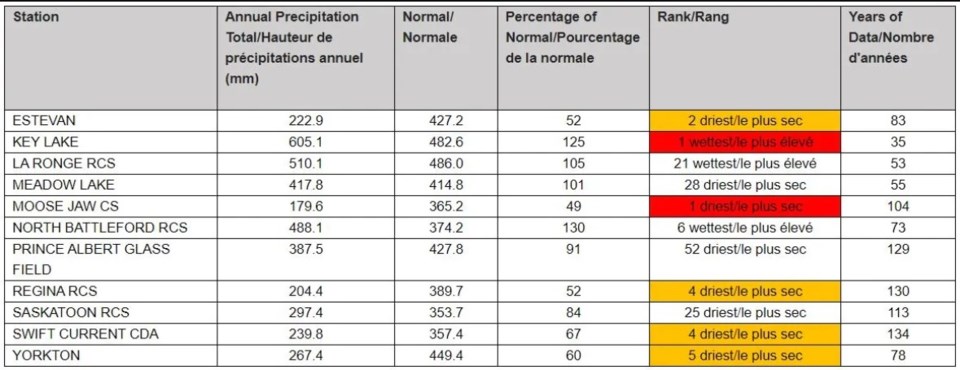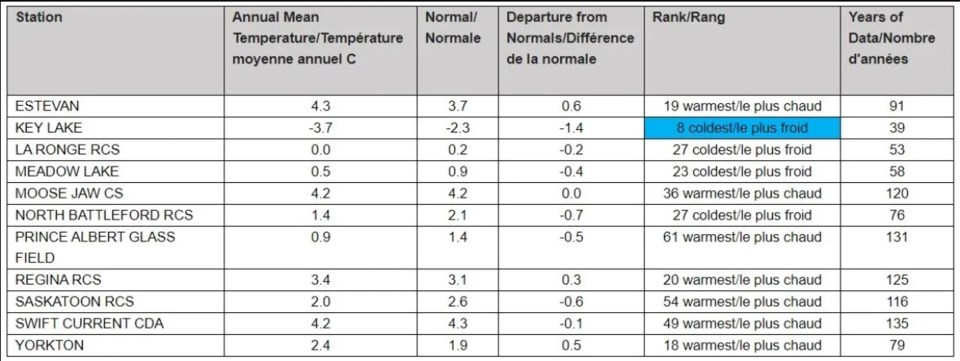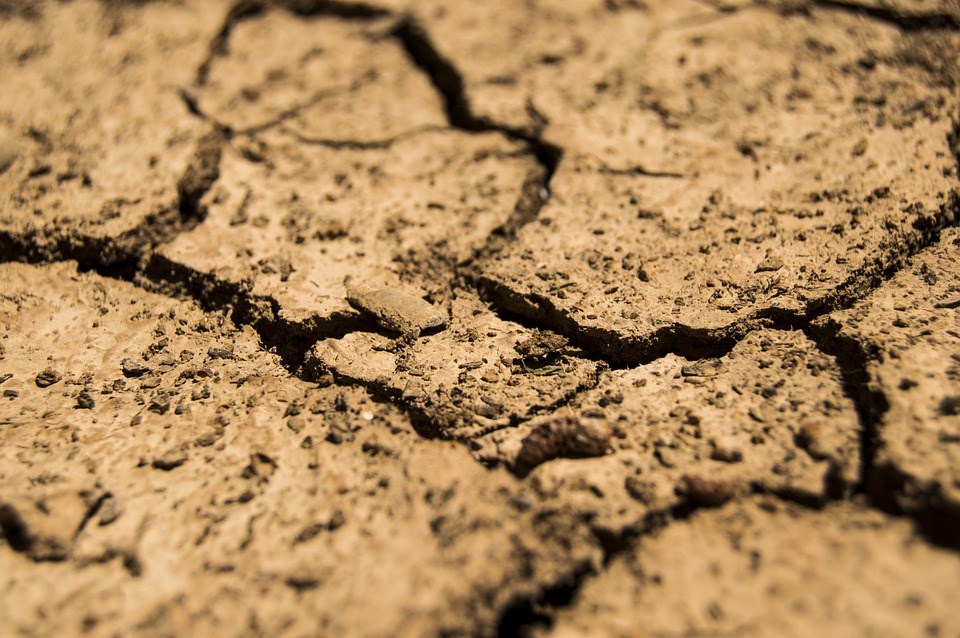If your lawn needed more watering last year, it wasn’t your imagination, as 2020 was the driest year Moose Jaw has ever experienced since records started being kept in 1917.
Recent data from Environment Canada shows that Moose Jaw received 179.6 millimetres (17.96 centimetres/7.18 inches) of precipitation last year. In comparison, in a “normal” year the municipality would receive 365.2 millimetres (36.52 centimetres/14.6 inches) of precipitation. Therefore, the city received 49 per cent of the usual precipitation.
Moose Jaw was the driest community in Saskatchewan last year, followed by Regina (204.4 mm/fourth driest year in 130 years), Estevan (222.9 mm/second driest year in 83 years), Swift Current (239.8 mm/fourth driest year in 134 years) and Yorkton (267.4 mm/fifth driest year in 78 years).
 A chart from Environment Canada shows the precipitation levels for 2020.
A chart from Environment Canada shows the precipitation levels for 2020. “The whole south was quite dry,” said Terri Lang, a warning preparedness meteorologist with Environment and Climate Change Canada.
With such dry conditions throughout the province, farmers will hope for major snowfalls in the next few months before spring arrives, she continued.
“(They) want it dry until they get the crop off the field (in the fall) and then they want to see the moisture start to pile up because the snow is money in the bank for them for the spring,” Lang said. “It adds to the soil moisture, which they need for the crops.”
While some areas of southern Saskatchewan saw record-breaking dry conditions, the situation was different in the north, which saw many areas receive overwhelming amounts of precipitation in 2020.
Key Lake residents needed hip waders and galoshes to navigate their community, after 605.1 mm (60.5 cm/24.2 inches) of precipitation fell throughout the year, which is 125 per cent more than the usual 482.6 mm of precipitation, according to Environment Canada data. This was the wettest year in the 35 years that records have been kept for that municipality.
“We saw very few forest fires because of the abundance of rain,” Lang said. “The concern will be how much moisture is up there and what that means in the springtime when everything starts melting.”
While different parts of the province received varying amounts of precipitation last year, much of the province near-normal temperatures, according to Environment Canada. Northern Saskatchewan was slightly colder than average, central Saskatchewan was near average, and the southeast corner was slightly warmer.
 A chart from Environment Canada shows the weather temperatures for 2020.
A chart from Environment Canada shows the weather temperatures for 2020. The annual mean temperature in Moose Jaw is 4.2 degrees Celsius, while the normal temperature is the same. Last year, however, the temperature was an average of zero Celsius, the data shows. This made 2020 the 36th warmest year since weather records started being kept 120 years ago.
Western Canada was one of the few locations that was either near average or colder than average, said Lang. In comparison, most the world was warmer last year. However, she warned that people should not rely on only one year’s worth of weather information.




